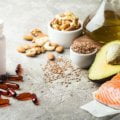Many folks tend to be responsible for our genes and health problems. But what if we ought to affect our genes by consuming positive foods prepared in a selected way? The new area of culinary genomics, which blends genomic science with nutrients and the culinary arts, says it does precisely that and uses food to steer gene expression.
Registered US dietician Amanda Archibald first coined the phrase in 2015 and is now teaching doctors, dietitians, naturopaths, and nutritionists around the sector about culinary genomics. Archibald, who is in Sydney this month to speak at the BioCeuticals Research Symposium, tells SBS what culinary genomics is.
“It takes nutrigenomics – the technological know-how of ways food interacts with our genes – out of the labs and places it within the kitchen,” says Archibald. “Culinary genomics teaches us how to use our DNA to decide what we must place on our plates and a way to cook dinner.”
A 101 on the link between our genes and meals
Our genes determine how we system and use food. Archibald explains this with an example. She tells SBS her husband was born to a Greek dad and mom but later orphaned and raised absent of Greek tradition. “As an adult, [he’s now] allergic to things that would not have been in the Greek food plan initially, like limes, avocados, and cow dairy.
“I stated to him, ‘Your genes are not lying. Historically, Greeks have eaten more goat and sheep’s milk than cow’s. They also don’t use a lot of limes; instead, they use lemons or oranges.” And so, no matter his upbringing and surroundings now not being Greek, his genes are. “It doesn’t matter where you’re from: simply the reality that you are a human being; your genes are going to respond to a few foods in an identical manner.”
Nutrigenomic recommendation for anybody
These days, we can access DNA exams that monitor certain health statistics, including how our bodies technique meals and the vitamins we need more or much less of. These exams value money, and not everyone and Sundry can have the funds for it.
Archibald says that is when culinary genomics is available. “On a private level, DNA look will let you know how much of a particular diet or micronutrient is compared to a man or woman. But there are principles [about genes and nutrition] that apply to all people, whether you already know your specific genomic statistics or not because our bodies all respond the same way to meals.”
This is because, at a molecular stage, our genes respond to the meals we eat. “It doesn’t rely on where you’re from, just the truth. Without you being human, your genes will reply to some meals insanely.” “We try to provide humans the components that incorporate the records for their genes so that we can flip off inflammation and reduce the strain in the frame.
Two factors that can hasten the old technique and cause sicknesses in anybody are infection and oxidative strain. 2011 has a look at Norway, indicating that our weight loss plan can irritate the frame and boost the threat of growing lifestyle-associated diseases. Researchers determined that an average Norwegian eating regimen manufactured from 65 in step with cent carbohydrates prompted a few genes to work beyond regular time. This affected the genes that motivate inflammation in the frame. The observation confirmed inflammation also affected genes related to cardiovascular disease, various cancers, and dementia.












